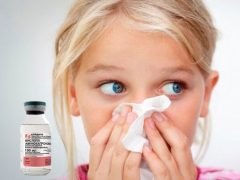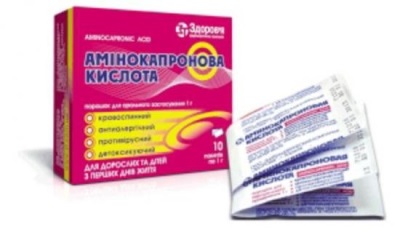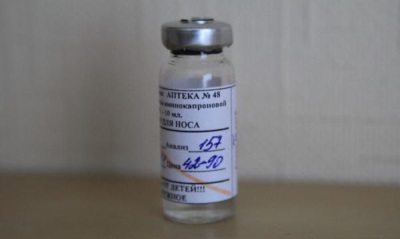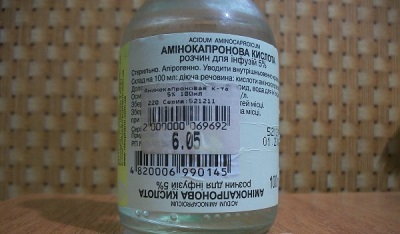Aminocaproic acid in the common cold in children
Immunity in childhood is only being formed, so colds and respiratory infections are not uncommon. One of the most frequent symptoms is a runny nose, in the treatment of which both medications are used, and folk recipes. Among the drugs prescribed to eliminate the common cold, there are modern and used for many years.
Against the background of currently popular vasoconstrictor drops or preparations based on sea water, it does not lose its relevance and aminocaproic acid. In what cases can a child with a head cold be prescribed such a medicine and what are the nuances of the use of this drug?
What is it?
Aminocaproic acid is a hemostatic medicine, therefore it is most needed to stop bleeding or prevent it. It is presented in several forms - 5% solution, powder and granules.
The tool is injected into a vein, taken by mouth or used externally, and with a cold - buried in the nasal passages, and also used for inhalation.
Operating principle
Influencing the body of the child, aminocaproic acid prevents the formation of fibrinolysin, with the result that this medicine stops bleeding. This causes the use of aminocaproic acid in surgery, but this drug can also be used for rhinitis, because it strengthens the blood vessels and reduces swelling of the mucous membrane.
It also has anti-allergic and antiviral effects.
The drug is characterized by low toxicity and rather rapid elimination from the body. When instilled into the nose, aminocaproic acid interferes with the production of pathological secretions, reduces inflammation and prevents the effect of the virus on the body. It is safe even in the first year of life.
Indications
Aminocaproic acid is prescribed for:
- Bleeding from the nose.
- Blood transfusions, operations and postoperative recovery.
- SARS with a cold.
- Allergic rhinitis.
- First degree adenoids.
- Sinus.
Note that the tool is also in demand as a prevention of viral infections in the epidemic season.
Contraindications
The drug should not be taken if the child has:
- There are circulatory disorders, such as thrombosis, embolism or thrombophilia.
- There is kidney or liver failure.
- There is a component intolerance or an allergic reaction.
- In the analyzes detected gross hematuria.
- Found serious heart disease.
Application
At a cold, aminocaproic acid is most in demand in the form of a prepared solution. It is also possible to use the drug in the form of powder or granules, from which a 5% solution is prepared, adding unsweetened water.
The medicine can be:
- Bury in the nose. If treatment of the common cold is required, one or two drops of the drug is administered to each nostril every three hours for 3-7 days. For the prevention of SARS, the remedy is instilled 4-5 times a day, 2 or 3 drops per season of influenza and other viral infections.
- Use for inhalation. For one procedure, you will need 2 ml of 5% solution. Inhalation is carried out twice a day for four days.
Reviews
Parents who used aminocaproic acid in the prevention or treatment of rhinitis in their children, in most cases, respond positively to this drug. They note the rapid effect, safety in childhood and affordable price for a fairly large amount of the drug.
The disadvantages include only some of the complexity of instillation, as it is inconvenient to open the bottle, and there is no pipette in it.















